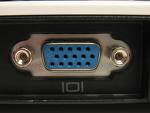My great experiment with TV over the Internet - Hooking it all up.
| Home | Cooking | Frugal Living | Technology | Real Estate | Fun & Games |
Unplug your Cable TV! Get free TV over the internet!
By Gordon Reeder
Durring the last year I have been engaged in a little experiment. It all started when I told Comcast to unplug the Cable TV. Since then I have been searching for TV programs on the internet. There are several ways to set up a TVoIP system. This article was part a general article I wrote on TVoIP. But it got so long that I made it a separate file.
Back to TV over the InternetHardware
First let's have a word about hardware. Good news! You don't need the latest superspeed multicore machine. But, you will need a fairly capable computer, at least a 2Ghz Athalon or Intel running Windows XP or 2000. Many TVoIP services are becoming web based services and are compatible with Apple and Linux systems.
Next, you need a graphics card, integrated video won't do. Video processing causes huge amounts of data traffic in your machine. Without a separate graphics card, you will overload the frontside bus. Preferably, you should get a graphics card that has dual monitor capability. Check your TV to make sure that you get a card with a compatible connector.
Some form of remote control would be nice too, but it's not neccessary. A wireless keyboard and mouse will work fine.
Since you are going through all this trouble, you might as well install a DVD or Blueray player in the system to let you watch DVDs. A Terestial DTV tuner card and an antenna will let you watch local channals.
You will need a fast Internet connection. 768Kbps may work, but just barely. If you are doing other work, or another computer is sharing the connection, you will notice it in your videos. A few services won't even work on 768K. Also be sure that your ISP doesn't cap your monthly bandwidth. Most DSL providers and Verizon fios don't, but many Cable ISPs will.
Software
You will also need software. You should have at least version 9 of Windows media player version 10 would be better. Make sure you have the latest version of Adobe Flash. Many videos are delivered as Flash video. Realvideo is also widely used, so you should download the free version of Realplayer. There have been reports that an open source program called Media Player Classic, (Not to be confused with the old style Windows Media Player)combined with the FFDshow codec pack (both available at free-codecs.com) provide all the functionality you need without having to download Real Player or Quicktime.
Linux setups are also possible. But this would limit your choices to the web based content or the few viewers that have Linux versions.
Hooking it up
There are several ways to watch TV from your computer. You can watch on your computer monitor. Many media players allow you to watch fullscreen or in a small window. If you travel a lot you could watch TV on your laptop screen.
For home use, if you can afford it, get yourself a big 27-inch, wide-screen monitor for your computer. It would serve as both a monitor for your computer and a TV. This would be the perfect setup for a dorm or small apartment. A monitor can be cheaper than a flat screen TV, and setup is as simple as plug and go.
A better way would be to hook up your TV as a 2nd computer monitor. First: you will need to have a graphics card with dual monitor outputs. Most graphics cards these days will support dual monitors.
ATI, for instance, provides both a standard VGA connector for your computer monitor, and an S-video, or HDMI connector for your TV.
Second: Make sure that your TV and graphics card have compatible connections. If you have one of those new flat panal TV's with a plethora of connectors, you
shouldn't have any problem. Just about every video connector known to man is on those things. If you have an older TV, you may have to use an adaptor to convert the video output of your computer to one that your TV can use.
Some connectors you are likely to see.
 1. HDMI or “High Definition Multimedia Interface” is the highest quality connection now. All HDTVs will have this connection though chances are your laptop or computer will not. If you do happen to have an HDMI connection on your computer then by all means, use this connection. If you do not have HDMI on your computer you can use an adapter to convert a DVI connection to HDMI.
1. HDMI or “High Definition Multimedia Interface” is the highest quality connection now. All HDTVs will have this connection though chances are your laptop or computer will not. If you do happen to have an HDMI connection on your computer then by all means, use this connection. If you do not have HDMI on your computer you can use an adapter to convert a DVI connection to HDMI.
 2. DVI stands for “Digital Video Interface” and has pretty much been the standard for connecting computer monitors since about 2003. Your computer will most likely have this connection. HDTVs should also have this connection. DVI comes in both analog (DVI-I) and digital(DVI-D) versions. They are not interchangable. Adaptors are available to convert DVI to HMDI or VGA.
If you wish to use audio with a DVI connection you must use a seperate audio cable. A cable from phones output connected to red and white audio in on your TV will work great!
2. DVI stands for “Digital Video Interface” and has pretty much been the standard for connecting computer monitors since about 2003. Your computer will most likely have this connection. HDTVs should also have this connection. DVI comes in both analog (DVI-I) and digital(DVI-D) versions. They are not interchangable. Adaptors are available to convert DVI to HMDI or VGA.
If you wish to use audio with a DVI connection you must use a seperate audio cable. A cable from phones output connected to red and white audio in on your TV will work great!
 3. VGA or “Video Graphics Array” connections are the most common video connections found on laptops and PC’s. HDTVs may have a VGA connection which means you simply need to connect the cable between your computer and televsion. However, older televisions will not have a VGA connection and will require a PC to television converter. There are adaptors that will convert VGA to DVI, S-Video, and Component video. There are also USB to VGA converters that allow you to set up your TV as a 2nd monitor.
Just like DVI, VGA does not carry a audio signal. Just use the same method from above for connecting audio from your phones output.
3. VGA or “Video Graphics Array” connections are the most common video connections found on laptops and PC’s. HDTVs may have a VGA connection which means you simply need to connect the cable between your computer and televsion. However, older televisions will not have a VGA connection and will require a PC to television converter. There are adaptors that will convert VGA to DVI, S-Video, and Component video. There are also USB to VGA converters that allow you to set up your TV as a 2nd monitor.
Just like DVI, VGA does not carry a audio signal. Just use the same method from above for connecting audio from your phones output.
 4. Component Video Is a medium quality connection. Your computer probably does not have this connection. HDTVs should have a component video input for consumer electronics like DVD players or video game consoles.
Just like DVI, Component Video does not carry a audio signal. Just use the same method from above for connecting audio from your phones output.
4. Component Video Is a medium quality connection. Your computer probably does not have this connection. HDTVs should have a component video input for consumer electronics like DVD players or video game consoles.
Just like DVI, Component Video does not carry a audio signal. Just use the same method from above for connecting audio from your phones output.
 5. S-Video or “Super Video” has been around for quite some time now. Some laptops and computer graphics cards will have a S-Video connection. Most televisions will also have a S-Video connection. This isn’t the best quality connection but its also not the lowest quality. S-video has the same audio limitation as the above two examples. Again, just use your phones output and a phones to RCA cable or adapter.
5. S-Video or “Super Video” has been around for quite some time now. Some laptops and computer graphics cards will have a S-Video connection. Most televisions will also have a S-Video connection. This isn’t the best quality connection but its also not the lowest quality. S-video has the same audio limitation as the above two examples. Again, just use your phones output and a phones to RCA cable or adapter.
 6. Composite connections, sometimes referred to as RCA connections, are the yellow, red, and white connections that most people will be familiar with. Red is right analog audio, and white is left analog audio. Yellow is composite video. This will be the lowest quality connection you can use. Most computers don't have this connection, Old school TVs mostly have this connection.
If your computer has no RCA connections, you can use an S-Video to RCA adaptor cable.
6. Composite connections, sometimes referred to as RCA connections, are the yellow, red, and white connections that most people will be familiar with. Red is right analog audio, and white is left analog audio. Yellow is composite video. This will be the lowest quality connection you can use. Most computers don't have this connection, Old school TVs mostly have this connection.
If your computer has no RCA connections, you can use an S-Video to RCA adaptor cable.
Copyright 2008, by Gordon Reeder